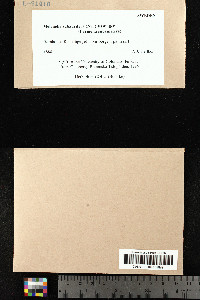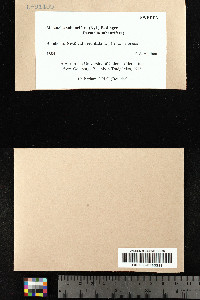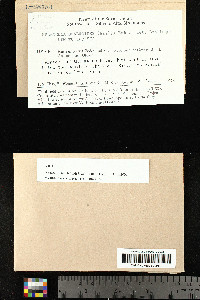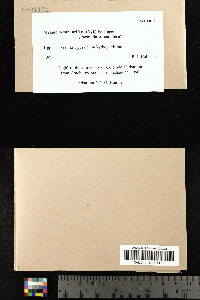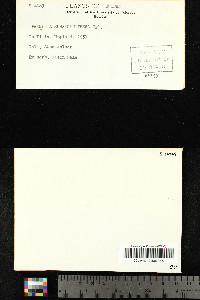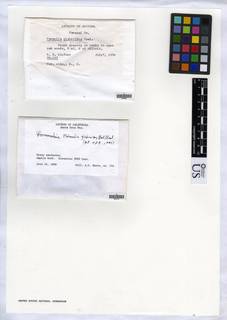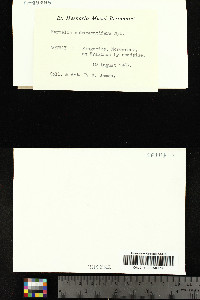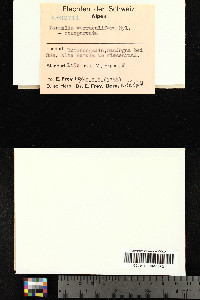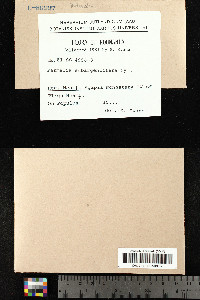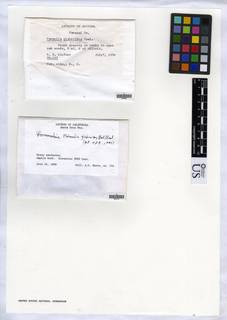
Consortium of Lichen Herbaria
- building a Global Consortium of Bryophytes and Lichens as keystones of cryptobiotic communities -
- Home
- Search
- Images
- Species Checklists
- US States: O-Z >
- US National Parks
- Central America
- South America
- US National Parks
- Southern Subpolar Region
|
|
|
|
Family: Parmeliaceae
[Melanelia glabroides (Essl.) Essl., moreParmelia glabroides Essl.] |
Nash, T.H., Ryan, B.D., Gries, C., Bungartz, F., (eds.) 2002. Lichen Flora of the Greater Sonoran Desert Region. Vol 1. Thallus: adnate to loosely adnate, appressed to pulvinate, foliose, up to 8 (-11) cm diam., lobate lobes: short and rounded to somewhat elongate and irregular, contiguous to more often imbricate, 2-3 (-5) mm broad, ± flat upper surface: olive-green to brown or reddish-brown, smooth to more often reticulately ridged and pitted, especially near the periphery, inward often becoming warted and/or lobulate; somewhat shiny on the lobe ends, the central parts or occasionally the entire thallus rather dull, only rarely bearing tiny, hyaline, cortical hairs (like those of M. glabra); without pseudocyphellae, but some lobes with linear, pale, pseudocyphelloid lines on the margins (as in M. glabra) lower surface: usually uniformly black, sometimes brown or even tan on the lobe ends; rather smooth to minutely and irregularly wrinkled or occasionally weakly reticulately ridged, usually dull; moderately rhizinate, the rhizines concolorous with the lower surface Apothecia: rare, up to 6 mm diam., sessile, concave to flattened or irregularly convex; the margin entire when small, becoming minutely to grossly crenate, sometimes with sparse cortical hairs asci: clavate, 8-spored ascospores: ellipsoid, 11-13 x 7-8 µm Pycnidia: frequent, immersed conidia: ± acerose to weakly fusiform, 6.5-7.5 x 1 µm Spot tests: cortex K-, C-, KC-, P-, HNO3-; medulla K-, C+ rose or red, KC+ red, P- Secondary metabolite: lecanoric acid. Substrate: rocks, sometimes with mosses World distribution: western North America, from Washington to Colorado, California, Arizona, and Baja California, Mexico Sonoran distribution: infrequent throughout its range; in the study area, this species is known from only four localities. Notes: This species is most closely related to the primarily corticolous species M. glabra. Although otherwise completely typical for M. glabroides, the single Arizona specimen seen (Esslinger 15826), has a few tiny hyaline cortical hairs on some lobes and on the rim of a single old apothecium. These hairs have not so far been observed in any other specimens of this species. Among herbarium specimens, the species most commonly confused with M. glabroides is unrelated M. tominii, which sometimes lacks soredia, and also has a C+ rose or reddish medulla (but due to gyrophoric, not lecanoric acid). It can be distinguished from M. glabroides by the presence on the lobes of laminal pseudocyphellae, which vary from conspicuous to somewhat obscure, but are not easy to overlook. |
Powered by Symbiota



